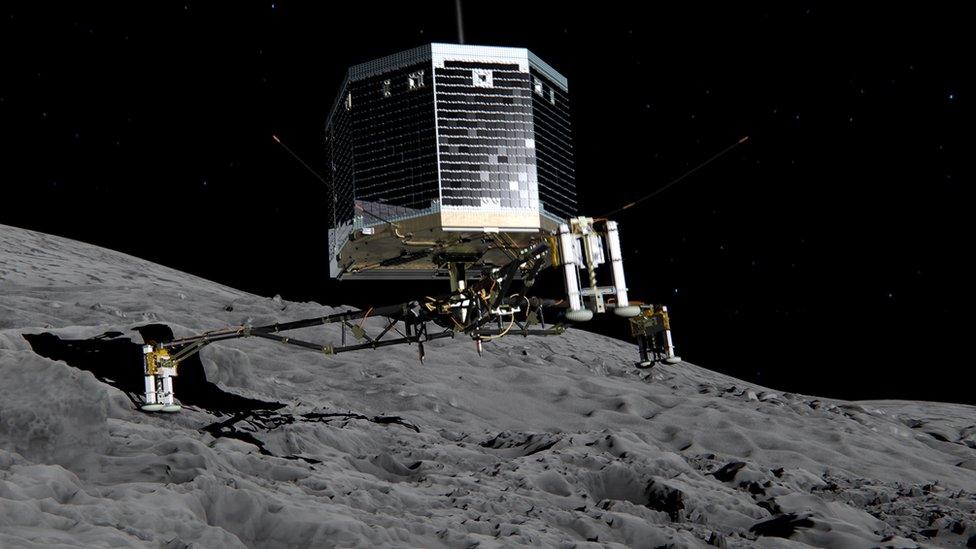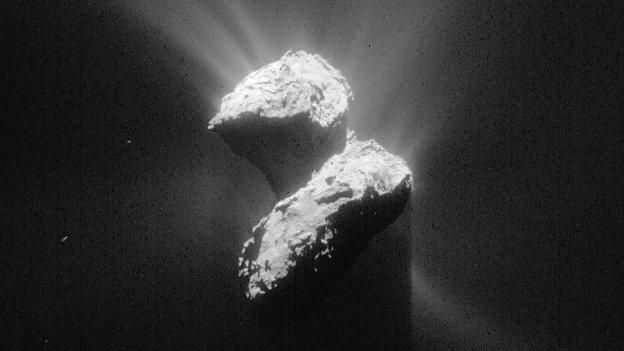Comet lander Philae renews contact
- Published

Philae's telemetry was passed to controllers in Darmstadt, Germany
Europe's Philae comet lander has been back in touch with Earth, external - its first contact since Sunday night (GMT).
The communication was relayed by its mothership Rosetta, which is in orbit around the 4km-wide icy dirt-ball known as 67P/Churyumov-Gerasimenko.
The signal was picked up by the US space agency's huge Goldstone antenna in California and then passed to the European Space Agency in Germany.
Before last weekend, Philae had been in hibernation for seven months.
The robot lost power just 60 hours after landing on the comet on 12 November - the consequence of bouncing into a ditch where sunlight could not reach its solar panels to generate electricity.
With the comet now having moved substantially closer to the Sun, the illumination conditions have improved and Philae has come back to life.
The communications with Earth - over a distance of 305 million km - have so far been very short, lasting just a matter of a few tens of seconds. A first contact came on Saturday; a second was received on Sunday. Friday's is also very brief - two individual connections lasting two minutes each.
This is long enough to glean the health status of Philae, which appears to be good.
"We are very happy to have received signals from the lander again, and we are all working hard towards establishing a robust link between Rosetta and Philae," commented Patrick Martin, Esa's Rosetta mission manager.
Controllers are currently in the process of manoeuvring Rosetta closer to the comet to try to establish longer and more robust connections. This will see the separation brought down to about 180km..
In time, it should be possible for Philae to resume the science investigations of Comet 67P that were terminated when the power went down.
The key experiment is to drill into the icy body, to determine its chemical make-up.
This was tried during November's 60-hour operating window but failed to produce a result, probably because the posture of the robot meant that the drill tool did not manage to touch any surface material.
Engineers think that if they can command Philae to rotate itself in the coming weeks, it ought then to be possible to recover a sample. But this all depends on the power levels available to Philae in its shaded location.
There are concerns also for the mothership Rosetta. It has only recently retreated from 67P to try to keep clear of all the gas and dust now coming off the comet as it warms up on its journey in towards the Sun.
This blizzard of material has the potential to confuse Rosetta's automated navigation systems, and controllers must take care that they do not put the probe in harm's way as they work on building a better radio link with Philae.

On its historic landing in November, Philae did not make the graceful touchdown depicted here
- Published17 June 2015

- Published15 June 2015

- Published14 June 2015

- Published14 June 2015
